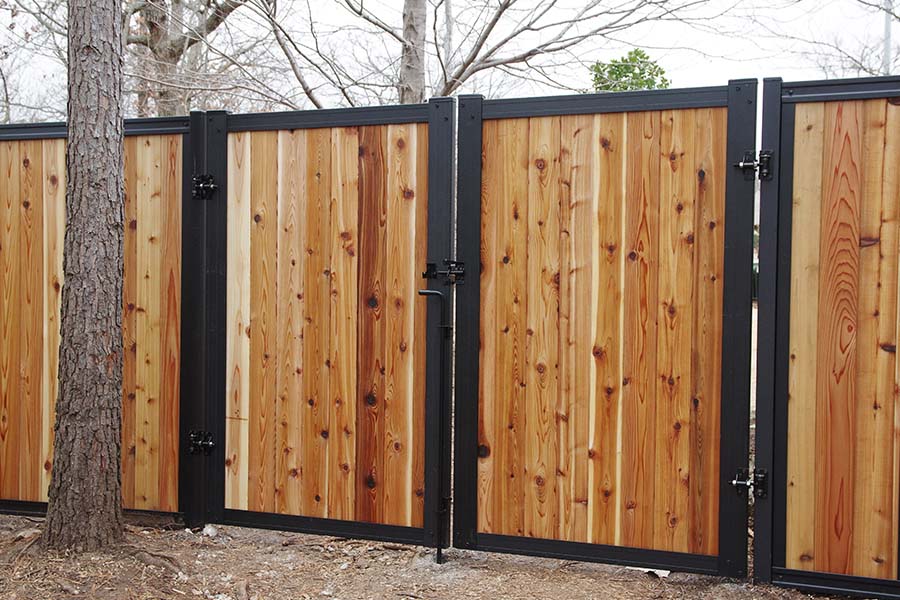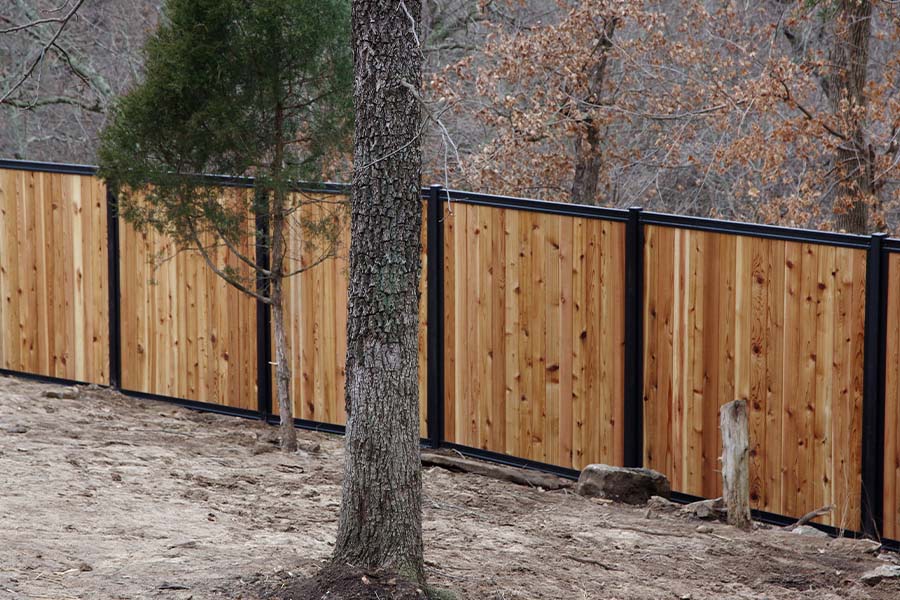All Categories
Featured

As sustainability comes to be an expanding priority for companies and homeowners, the need for environmentally friendly building materials extends to outdoor spaces, consisting of fencings. Traditional secure fencing materials such as steel, plastic, and wood can have substantial environmental impacts, from deforestation to chemical therapies and plastic waste.
- Bamboo Secure fencing. Bamboo is among one of the most lasting materials on the market, and it is increasingly utilized in fence building because of its fast development and stamina. Unlike hardwood trees, bamboo is a yard that can expand back fully within simply a couple of years, making it extremely eco-friendly. It's naturally resistant to parasites and rot, which suggests it does not call for severe chemicals or treatments, making it an eco-friendly choice.

Conveniences: Bamboo fencings are sturdy, low-maintenance, and eco-friendly. They are normally resistant to termites and dampness, minimizing the demand for chemical preservatives. Additionally, bamboo helps in reducing soil disintegration due to its deep root systems. Considerations: Bamboo can be more expensive than some typical wood fencing alternatives, and it might not be suitable for areas with extreme chilly or freezing temperatures, as it can end up being breakable with time. 2. Recycled Products Fencing. Fence made from recycled products is a great means to promote sustainability. Lots of producers now offer fencings made from post-consumer plastic, recycled wood, and even repurposed steel. By selecting fencing made from recycled products, you minimize the demand for new resources and assist prevent waste from winding up in garbage dumps. Several composite products, for instance, are made from recycled plastic bottles, wood scraps, and various other products that would certainly or else be discarded.
Conveniences: Recycled material fencings help conserve natural deposits, reduce pollution, and reduced the environmental effect of the manufacturing procedure. They can also supply excellent longevity, withstanding decay, mold and mildew, and termites. Factors to consider: While recycled material fences are highly resilient and eco-friendly, they might not have the same natural aesthetic that some house owners look for. Suppliers currently offer designs that resemble the appearance of wood or stone. 3. Composite Fence. Composite secure fencing is made from a mix of wood fibers and plastic, often including recycled materials. This combination develops a highly sturdy, low-maintenance fencing that does not call for regular painting or staining, making it a lasting alternative. Compound fencings are immune to rot, bugs, and weathering, which means they can last for many years without the demand for constant substitutes.

Benefits: Composite fences are lasting and can endure rough climate condition, lowering the need for fixings or replacements. Considering that composite products commonly include recycled material, they aid lower plastic waste. Furthermore, they do not require dangerous chemicals or therapies. Considerations: Compound fences can have a greater in advance price than typical timber or vinyl, though their longevity and lowered upkeep costs frequently make them a more economical alternative over time. 4. Living Fences. Living fences, also called hedges, are an environmentally friendly and aesthetically pleasing alternative that entails planting dense hedges, trees, or climbing up plants along your home line to develop an all-natural obstacle. Popular plants for living fences consist of boxwood, privet, and holly. These plants can be expanded to give privacy, windbreaks, and noise decrease while adding to ecological health and wellness.
Benefits: Living fencings advertise biodiversity, boost air top quality, and absorb co2, making them one of one of the most environment-friendly fence options. They additionally give a natural environment for insects and birds and can lower sound air pollution and aid control temperature levels in your backyard. Considerations: Living fencings need routine maintenance, such as trimming, watering, and in some cases pest control. They likewise require time to develop and might not provide prompt personal privacy compared to strong timber or plastic fences. 5. Cedar and Redwood Fencing. Cedar and redwood are prominent natural wood alternatives for fencings. These products are naturally resistant and durable to rot, parasites, and wetness, which suggests they usually don't require the use of harmful chemical therapies. When sourced from sustainably managed woodlands, cedar and redwood fencings can be an eco pleasant selection that gives both charm and long life.
Conveniences: These timbers are biodegradable, sustainable, and deal exceptional durability and all-natural elegance. Cedar and redwood additionally have a lower environmental influence when harvested properly, making them a green option for numerous property owners. Factors to consider: While cedar and redwood fencings have environmental advantages, they do still call for periodic maintenance and are a lot more pricey than other wood choices. It is necessary to make sure that the timber is sourced from lasting woodlands to maximize its ecological advantages. 6. Stone and Brick Secure Fencing (Reclaimed) Rock and block fencings are low-maintenance and exceptionally sturdy, and they can be eco-friendly when made from redeemed materials. Reclaimed rock and brick are usually salvaged from old structures or construction tasks, minimizing waste and saving natural deposits. These materials use a classic appearance and are extremely resistant to weathering, making them a durable remedy for fence.
Advantages: Redeemed rock and brick are sturdy, visually pleasing, and call for very little upkeep. By repurposing these products, you help in reducing the need for brand-new sources and reduce waste in land fills. Considerations: The installation of stone and block fencings can be labor-intensive and a lot more expensive compared to other materials, but their longevity and low maintenance requirements can make them affordable over time. Conclusion. Green fence choices are not only good for the environment however also supply toughness, low maintenance, and visual charm. Whether you decide for bamboo, recycled products, composite secure fencing, living fences, or sustainable wood like cedar and redwood, there are lots of methods to minimize your ecological footprint while improving your home's look. By choosing these eco-conscious materials, you can contribute to a much healthier world and produce an outdoor space that reflects your values.
Latest Posts
Discover Why Chicago Drivers Prefer Montclare Auto Repair for Trusted Service and Significant Savings
Published May 31, 25
1 min read
How Regular Car Maintenance at Montclare Auto Repair Keeps Your Wallet Happy
Published May 22, 25
1 min read
Experience Your Financial Partner at WyHy – Low Rates for Wyoming Residents
Published May 22, 25
1 min read
More
Latest Posts
Discover Why Chicago Drivers Prefer Montclare Auto Repair for Trusted Service and Significant Savings
Published May 31, 25
1 min read
How Regular Car Maintenance at Montclare Auto Repair Keeps Your Wallet Happy
Published May 22, 25
1 min read
Experience Your Financial Partner at WyHy – Low Rates for Wyoming Residents
Published May 22, 25
1 min read